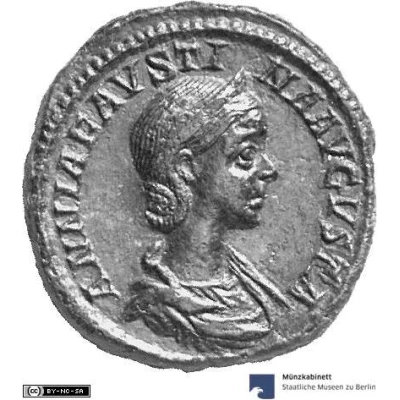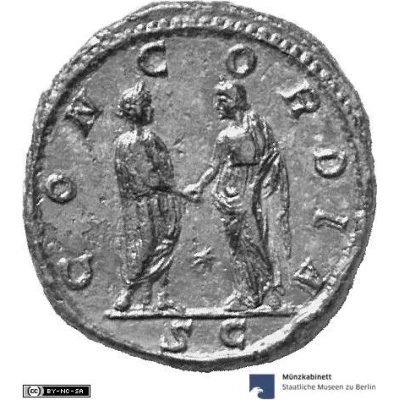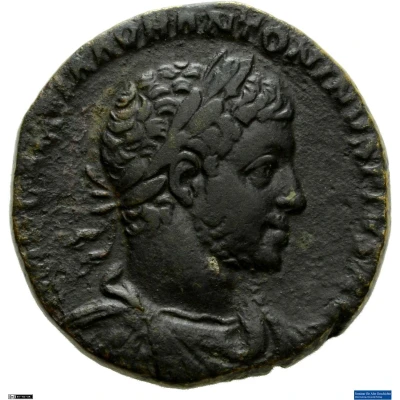


© Münzkabinett, Staatliche Museen zu Berlin (CC BY-NC-SA)
Sestertius - Anna Faustina and Elagabalus CONCORDIA S C
221 year| Bronze | 29.3 g | 32 mm |
| Issuer | Rome › Roman Empire (27 BC - 395 AD) |
|---|---|
| Emperor | Elagabalus (Sextus Varius Avitus Basianus) (218-222) |
| Type | Standard circulation coin |
| Year | 221 |
| Value | Sestertius (⅛) |
| Currency | Antoninianus, Reform of Caracalla (AD 215 – 301) |
| Composition | Bronze |
| Weight | 29.3 g |
| Diameter | 32 mm |
| Shape | Round (irregular) |
| Technique | Hammered |
| Demonetized | Yes |
| Updated | 2024-10-05 |
| Numista | N#277090 |
|---|---|
| Rarity index | 100% |
Reverse
Elagabalus, togate, and Annia Faustina, draped, standing right and left, facing each other, clasping right hands; in field, star.
Script: Latin
Lettering: CONCORDIA S C
Translation:
Concordia Senatus Consultum.
Harmony. Decree of the senate.
Comment
Mass varies: 23.71–42.37 g;Diameter varies: 31–33 mm;
Example of this type:
Münzkabinett, Staatliche Museen zu Berlin (CC BY-NC-SA)
Source:
Online Coins of the Roman Empire (OCRE)
Interesting fact
One interesting fact about this coin is that it features an image of the Roman goddess Concordia on the reverse side, which symbolizes unity and harmony. This is significant because it suggests that the Roman Empire, which was known for its military conquests and political turmoil, also valued peace and unity among its citizens. Additionally, the fact that this coin was minted during the reign of Elagabalus, who was known for his controversial and unconventional rule, makes it even more fascinating.

